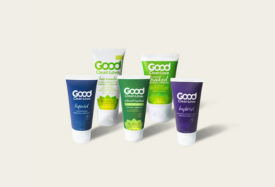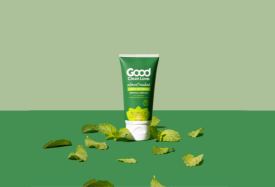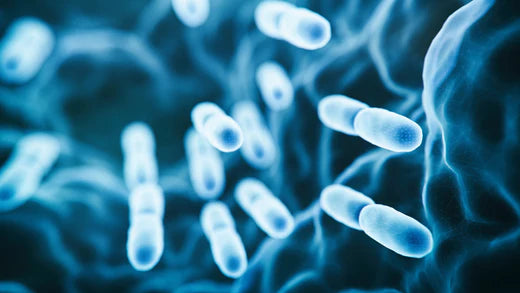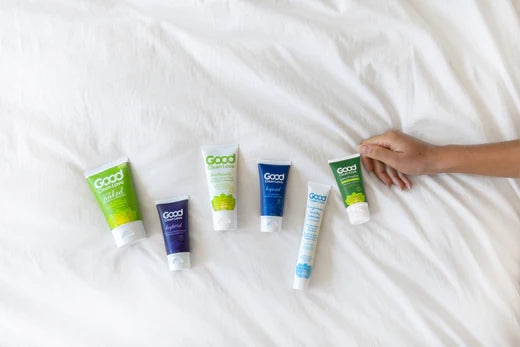Personal lubricants come in a variety of options, from silicone-based and oil-based, to water-based, and hybrids of any and all of these. But depending on their chemical makeup, lubricants can also have varying levels of what scientists call osmolality.
A lubricant’s osmolality is a numerical score of how concentrated the molecules are in a product you’re using in comparison to whatever the product is interacting with - like your skin or vaginal fluids. This osmolality rating of a lubricant is important because the epithelial skin layers and your body’s natural mucus are constantly trying to maintain homeostasis, or an equilibrium of osmolality, when they encounter a new substance like a lubricant.
The Three Types of Osmolality
If a lubricant has a higher osmolality than the cells of the body (hyper-osmolar), the vaginal tissue releases its own moisture in an attempt to reach homeostasis with the lubricant. So instead of making the vaginal tissue moisturized, this process actually dries out the tissue, putting women at risk of abrasions, skin sloughing, and other cell damage. Studies show that due to this tissue damage, hyperosmolar lubricants also put women more at risk of infections, such as bacterial vaginosis and others. Unfortunately, many of the most popular and easily-available lubricants on the market are hyper-osmotic.
If a lubricant has a lower osmolality than the cells of the body it’s called hypo-osmolar, and causes the cells of the body to pull water out of the lubricant.
A perfect lubricant would be iso-osmolar, meaning it would have equal osmotic pressure, or its cells would have the same hydration levels as the cells of vaginal tissue, which is approximately 285-295 mOsm/kg, or milli-osmoles per kilogram of solvent. Our lubricants, for example, are iso-osmolar and pose less risk to vaginal tissue because they mimic the body’s natural lubrication, rather than drying out vaginal tissue.

This chart shows the osmolality of a vagina's natural fluids (290 mOsm/kg) in comparison to other substances, such as Good Clean Love lubricants (270 mOsm/kg) and semen (340 mOsm/kg), as well as hyper-osmolar lubricants in the 2,500 to 10,300 mOsm/kg range.
Why Is It Important to Know a Lube's Osmolality?
The epithelial layer is the first layer of defense of the inner vaginal microbiome. The vaginal epithelium extends from the opening of the vagina to the cervix and is composed of a variety of types of cells that ensure that if certain cells are removed based on friction, for example, from intercourse or menstruation, the inner cells will stay undisturbed.
It’s important to be aware of this layer because it acts like skin for our inner vaginal microbiome. These cells need to maintain a certain level of water content (or osmolality) in order to stay balanced. Since lubricant will be coming into contact with this layer of the vaginal lining first, it’s essential that the osmolality of the lubricant is compatible with that of the epithelial lining.

When you apply a personal lubricant, it first comes into contact with your epithelial layer. What happens next?
- In the case of a hyper-osmolar lubricant, the water in the epithelial cells get sucked dry and any water there gets siphoned away. When these cells get dried up, they shrink, leaving the vagina more vulnerable to inflammation and infection.
- On the other end of the spectrum, lubricants that are low on the osmolality scale (hypo-osmolality) cause an imbalance too because they have less water content than the epithelial cells. When they come in contact with these cells, they can cause these cells to swell and then rupture.
- The ideal level of osmolality for a personal lubricant is iso-osmolar because they won’t over- or under-load epithelial cells with water. Thus, the vaginal lining is able to stay balanced and maintain an equilibrium.
Avoiding Lubricants That Aren’t Iso-osmolar
When it comes to osmolality and lubricants, we recommend using the Goldilocks formula: find a personal lubricant that is just right. With an iso-osmolar lubricant, you won’t have to worry about any unnecessary risk of inflammation or infection in the vaginal lining. In addition, an iso-osmolar lubricant will also prevent any risk that your lactobacilli might be affected.
Now that you know the basics of osmolality and why you should look for lubricants that are similar to vaginal fluids, you might be asking: how do Good Clean Love lubricants compare?

All of our lubricants all designed to match the osmolality of the epithelial cells, hence our Bio-Match® technology. Be sure to check them out here.














